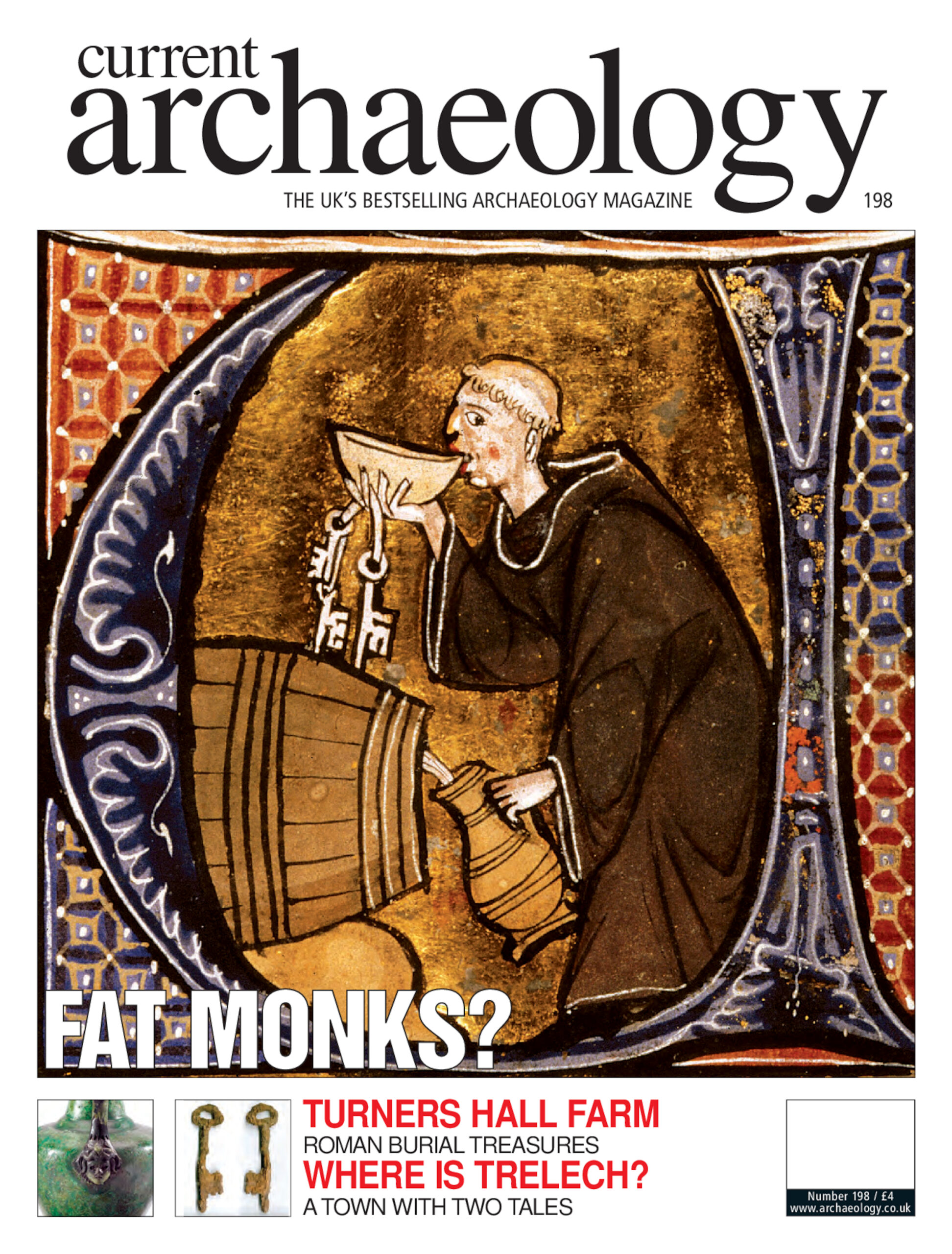This issue we start with the Hertfordshire country set – c.150 AD. Two of the richest Roman burials ever found in Britain have just been excavated next to a villa at Turners Hall Farm near Roman Verulamium. As well as fine ceramics and glassware, the graves contained top-of-the-range bronze jugs from the Pompeii region, plus a set of hunting arrows, and, oddly, a woodworking tool-set. Excavator Simon West describes the finds and tells us what he thinks they reveal about the owners.
From the Roman South-East we go to Viking Age Clydeside. Govan Old Parish Church in Glasgow houses one of the finest collections of 10th and 11th century sculpted stones in Britain – including a splendid sarcophagus and five ‘hogbacks’. What are the stones doing in the heart of a modern industrial city? The answer throws light on the origins of Scottish national identity.
From medieval Scotland to medieval Wales – or rather, to the troubled borderland between England and Wales in the 13th century. Our third article features contrasting reports of two excavation
campaigns side-by-side at Trelech in Monmouthshire, site of a 13th century ‘new town’. Ray Howell thinks the town was laid out around the known church and castle. Steve Clarke argues it lay
half a mile to the south. The protagonists present the evidence in full.
Then we return to the South-East to discover that another Anglo-Saxon cemetery has been unearthed just a few miles from the spectacular ‘Prittlewell Prince’ burial featured in CA 190. This time, though, the occupants were the poor, and we learn something of the glaring social inequalities in 6th and 7th century England.
Finally, Pip Patrick poses the question: was Friar Tuck based on reality? Comparing skeletons from monastic and secular cemeteries, she finds that medieval monks had a marked tendency to obesity – and therefore to the deadly sin of gluttony!
And there is a lot more – the Diary, Books and News items, and an extended Letters section.
Good reading!
Neil Faulkner

